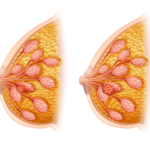Advances in early detection
Expanded options to screen for breast cancer in its earliest stages are helping more patients seek treatment before the disease can progress. Breast cancer is one of the only cancers that has a practical test: the mammogram. That is why it is recommended women aged 40 and up with an average risk for breast cancer have a mammogram every year. When cancer is detected, modern developments are helping to make even challenging cancers more treatable than ever before.

RESOURCES
In addition to the breast care services that NBCF (National Breast Cancer Foundation) provides to women in need, the following resources offer financial assistance for breast cancer patients.
National Breast and Cervical Cancer Early Detection Program (NBCCEDP)
The Centers for Disease Control and Prevention (CDC) provides access to breast cancer screening services to under-served women in all 50 states, the District of Columbia, 5 U.S. territories, and 12 tribal organizations.
National Cancer Institute
Information about free or low-cost mammogram screening programs is available through NCI’s Cancer Information Service at 1-800-422-6237.
The American Cancer Society
The American Cancer Society (ACS) provides resource lists for free or low-cost mammograms and financial assistance based on your location. When you visit their website, Cancer.org, look for the “About Us” tab in the top right corner. When you click on that, select your state in the “Where We Help” menu to be directed to a list of local resources.
Breast and Cervical Cancer Treatment Program (BCCTP)
This state program is funded through Medicaid to provide under-served women with free healthcare throughout treatment. The program is available in all 50 states. For the application process, contact your local hospital and ask to speak to a nurse or patient navigator regarding the program.
The Patient Access Network Foundation
The PAN Foundation aids in removing financial barriers to medications, treatment, and travel expenses for patients.
Cancer Financial Assistance Coalition
The CFAC is a coalition of organizations that help patients reduce financial barriers during cancer treatment. When you visit their website, select the type of assistance needed and enter your zip code to find resources near your area.
Mammography Facility Database
The Mammography Facility Database is updated periodically based on information from the three FDA-approved accreditation bodies, the American College of Radiology (ACR), and the states of Arkansas and Texas, to provide a list of facilities where mammography services are available based on your location.
Local Hospitals
Call your local hospital and ask to speak to a social worker, patient navigator, or nurse navigator. They can refer you to any state or local financial assistance programs for breast cancer exams or treatment.
One of the most intriguing revolutions for breast cancer developments is included in this link from the City of Hope. I encourage you to read and then share with others. Today, there is hope for today and bright hopes for tomorrow!
https://www.cityofhope.org/4-breast-cancer-treatment-innovations-look-2024
REFERENCES
City of Hope
Healthline
National Breast Cancer Foundation, INC.
Scripps Health









